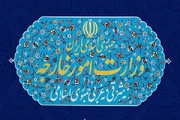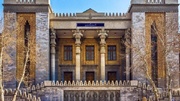The campaign for Iran's parliamentary elections kicked off on February 22 and will continue until February 29, a day before the polls open.
More than 15,000 candidates will compete in the parliamentary elections. As many as 290 representatives will be elected for a four-year term in this round of parliamentary elections.
Referring to the upcoming parliamentary elections and the Assembly of Experts elections, which are scheduled to be held on March 1, the Leader of the Islamic Revolution Ayatollah Seyyed Ali Khamenei has stated that everyone should participate in the elections, stressing that elections are the main pillar of the Islamic Establishment.
The elections are the way to reform the country, he added.
Voters do not need to register before an election. All citizens who are eighteen years old on election day and not mentally ill can vote at any polling station in the country.
By law, election day is a holiday in Iran. Polling stations are open for at least ten hours, with the Interior Ministry able to extend these hours if needed, which is often done.
In the constitutional revision, the National Consultative Assembly was renamed the Islamic Consultative Assembly.

First parliamentary election
The first round of the parliamentary election kicked off on May 28, 1980, and ended on May 27, 1984.
The holding of three presidential elections due to the dismissal of Abolhasan Bani-Sadr, the assassination of Mohammad Ali Rajaei, and the third presidential election in 1981, and the occurrence of an eight-year war imposed on Iran were among the important issues of this term.
The first edition of the Majlis featured 28 permanent committees and 8 specialized committees.
The second edition of the Majlis started work on May 29, 1984.
The Supreme Council of the Cultural Revolution kicked off in this round of the election.
The parliament passed 318 bills with 28 permanent committees and 3 specialized committees.
The third edition of the Majlis featuring 25 permanent commissions and 3 specialized commissions began on May 28, 1988.
The number of laws passed for the third term of the Islamic Council was 251.
The adoption of Resolution 598, the demise of Imam Khomeini (RA), and the election of Ayatollah Khamenei as the Leader of the Islamic Revolution are among the most important events of this period.
The fourth edition of the Majlis featured 23 permanent commissions.
This round of parliament began on May 28, 1992, and wrapped up on May 26, 1996.
The fifth edition of the Majlis featured 24 permanent commissions and 2 specialized ones.
On June 1, 1996, this round of the parliament kicked off.
The sixth edition of the Majlis which enjoyed 14 permanent commissions started on May 27, 2000.
Increasing the number of legislators from 270 to 290 according to Article 64 of the Constitution was one of the most important measures of this term.
The seventh edition of the Majlis kicked off on May 27, 2004.
Like the sixth edition, this round featured 14 permanent commissions.
In this parliament, the voting method was changed from a “stand-up” method to an electronic one.
The premises of the Majlis were relocated in this round and Baharestan was selected as the new location.
The eighth edition of the Majlis featured 15 permanent commissions, 2 specialized commissions, and one joint commission.
The ninth edition of the Majlis started on May 27, 2012. The parliament featured 28 permanent commissions, and 3 specialized commissions.
The draft of law and rules for Iranian media was prepared in this edition of the parliament.
The tenth edition of the Majlis featured 11 permanent commissions.
The run-off stage of the edition was held on April 29, 2016.
Iranian parliamentarians approved 200 bills in this edition of the parliament.
The eleventh edition of the Majlis featured 13 permanent commissions.
The parliament, dubbed revolutionary Majlis, kicked off on May 27, 2020.
The 12th round of the national event is scheduled to be held on March 1 to elect 290 representatives for a four-year term.
MNA

























Your Comment